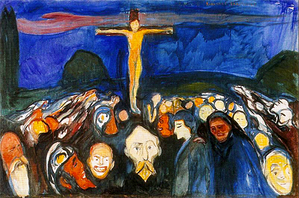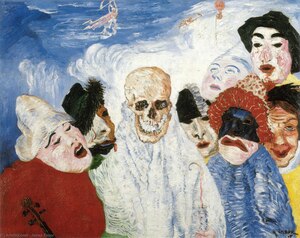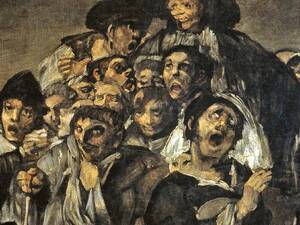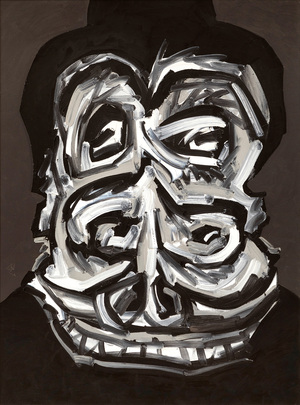Antonio Saura: the faces of the abyss
The importance of Antonio Saura in the renewal of Spanish post-war art is clearly unquestionable. Consolidated as one of the great introducers of abstraction in Spain, Saura is also one of the greatest followers of the Expressionist artistic tradition. In addition to the unavoidable influence of American abstract expressionism and French informalism, the tragic substratum that pervades each and every one of his works hides numerous references rooted both in the wild vein of Spanish painting and in European Nordic expressionism.
In fact, some of his most emblematic series draw directly from some of the most significant artists who anticipated and elevated the expressionist aesthetics and philosophy to the highest level. In this sense, Saura’s plastic universe finds in the human figure one of the essential axes of a vast trajectory in which we will see an endless parade of mutilated and distressed aberrant characters that, in line with his admired Goya, Munch or Ensor, show us the monstrous side that resides in every being.
An example of this is this resounding oil painting that, under the title of Don, allows us to admire the very personal and recognizable world that Saura was able to build. Undoubtedly and as we see in this case, the backbone of his work was always the human figure, and very specifically his faces and heads to which, starting from the figurative substrate, he subjected to a radical transformation associated with the gestural painting of action paiting and informalism. Through the strident features, which by means of frenetic strokes break the limits of the face, Saura reveals a heartbreaking portrait of a society that, stripped of its identity, is consumed in a world in perpetual contradiction and decadence.
Since 1956, when the first head appeared in his paintings, it became one of his signs of identity, completely conditioning the whole development of his own universe full of eyes, faces, signs and violent strokes that become a true catalog of the obsessions, passions and fears that Saura faced with brutal honesty. Their deconstructed or variegated heads, fused in a somber atmosphere reduced to black and white tones, are rooted in Goya’s Black Paintings and Munch’s frightened characters. who, respectively ahead of their time and analyzing their own, showed the reality of a century that would go down in history as the century of horror. In a continuous process of construction and destruction that defines the image, Saura took up the baton of both artists, representing the alienation of the human being in faces that, diluted and mutilated or drowned in a solitary cry, become both victim and executioner of the disasters that occurred throughout the twentieth century.
In this sense Goya, considered by many the creator of modernity, left an indelible mark on artists who, like Saura, released in his paintings the monsters that reside within us and within themselves. The Aragonese painter’s informalist gesture underlies the expressive force with which Goya portrayed the reality of the world and the human being with its lights and shadows, in an overwhelming story that was ahead of its time to denounce the barbarism in which humanity was immersed. From this point of view, Saura’s portraits are presented as updates of the artist from Fuentetodos, revealing that fierce vein that began in the Baroque period and that finds in Goya one of its greatest exponents. In this aspect, Saura establishes an analogy between this trait of Goya’s painting and the gesturality of abstract expressionism, which, by establishing itself as a symbol of freedom, allows the artist to face himself before the painting -as Goya did- without ties or impostures.
Following the tradition, Saura turned his gaze towards the Nordic expressionism led by artists such as Munch or Ensor, who acted as a common thread between the work of Goya and that of Saura himself. The Norwegian artist stands as a fundamental pillar in Saura’s expressive culmination through anguished faces that, as in Munch’s work, represent the insurmountable abyss to which humanity is heading.
In short, the monstrous characters of Goya, Munch and Saura shout the same lesson: if they take away our identity, they take away everything, even our humanity. This is the great learning that Goya, in his lucid and torn vision of humanity, brought to modern art. Because the human condition is implicit in the condition of a monster, two sides of the same coin that in the 20th century became an incontestable truth that Goya anticipated and in which Saura projected the stark reality of a world in decline.
Undoubtedly, the magnitude of his work in the development and understanding of Spanish post-war art makes him one of the most outstanding artists of the second half of the 20th century and an essential value for any good collection of contemporary art.









